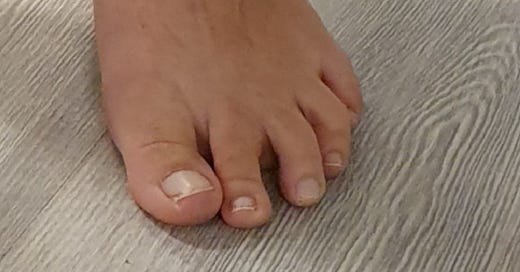Inward deviation of the big toe, also known as hallux valgus, affects both men and women.
Although women are more prone to this condition due to the frequent wearing of high-heeled shoes, men are by no means immune.
Roughly 1 in 4 people develop a bunion, and the likelihood increases with age. Long-term wearing of narrow shoes (especially those with elevated heels), combined with the loss of tissue rigidity due to decreased collagen content, raises the prevalence in the elderly to around 35%.
Ligaments around the joints lose their supportive capacity, increasing the risk of additional joint misalignments.
Movement of the big toe plays a crucial role in walking.
During the final phase of the gait cycle, when the heel begins to lift off the ground, the big toe must transition into extension.
If the push-off does not occur through the tip of the big toe but instead through the inner edge of the foot, the gait pattern can actually worsen the condition.
The good news is that the condition can be influenced, and the function of the big toe can be improved.
What exactly causes the inward deviation of the big toe, and which exercises can help manage the condition, I explain in the video below – the video is part of my educational program.
Keep reading with a 7-day free trial
Subscribe to Human Function & Performance to keep reading this post and get 7 days of free access to the full post archives.






